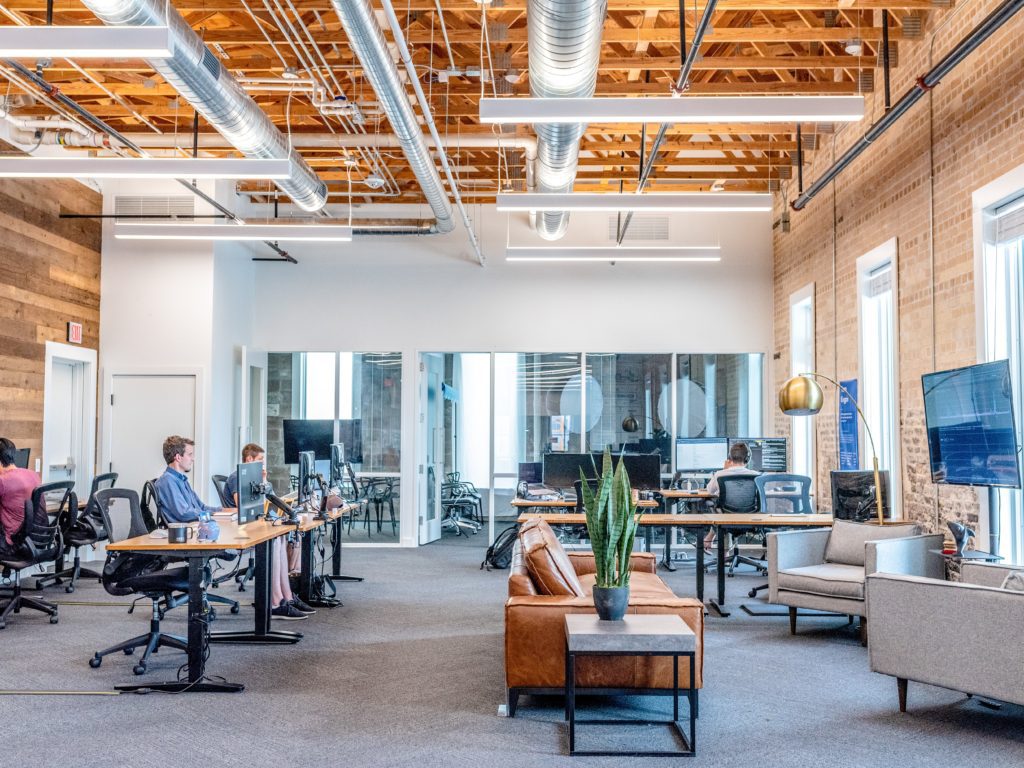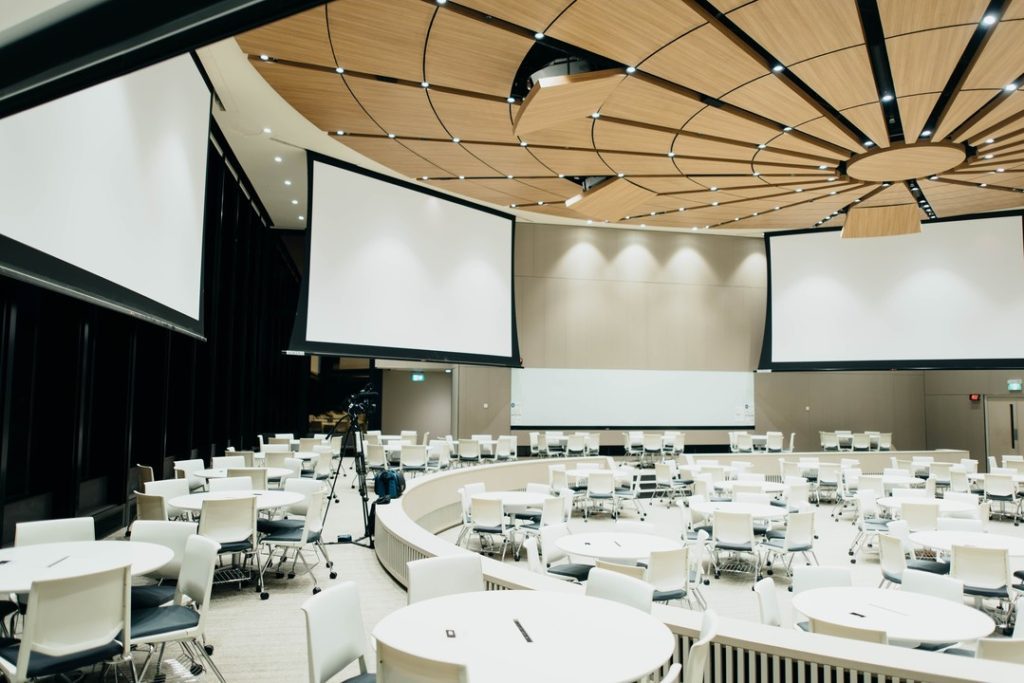Two years ago, you received a company laptop, went home, and figured out how to work remotely. It wasn’t easy, but there were benefits: a commute measured in footsteps instead of miles, flexible work hours, and a better work/life balance. Now, with COVID receding, you’re all a little wary of returning to the office, especially if the office hasn’t changed much since 2019.
But suppose, after two years of working on that laptop at the kitchen table, you return to an office that’s been reconfigured to foster a creative, community-oriented approach for a hybrid workforce. A flat-screen display in the revamped lobby welcomes new hires and recognizes employees of the month. Two colleagues brainstorm using an interactive screen in the huddle space near the company lounge. A couple of new hires are onboarding in the shared workspace area. You schedule a meeting with staff in a branch office three states away. Later, you launch that meeting in one of the new meeting rooms. It takes seconds to connect, and everything works – including the audio and video.
This isn’t the office you left two years ago.
What will it take for companies to welcome their teams back to the office? The office experience itself must change to inspire workers who’ve found the benefits of long-term remote/hybrid work models. As Los Angeles-based design collective RIOS envisions it, the future of work is in “dynamic, livable office spaces” built from the walls out to emphasize flexibility and designed for meaningful collaborative experiences.
Businesses worldwide are grappling with how best to accommodate hybrid workstyles and support on-site workers with functional, adaptive workspaces. Here are six essentials to refresh workflows and prepare for the future of work.
1. Dedicated, platform-agnostic AV infrastructure enables meetings to happen regardless of whether a user has an iPad or a PC, video, Powerpoint or Google Slides. If your office requires one platform or presentation format, it’s time to unlock your meetings.
2. Intuitive, user-friendly meeting controls minimize the time needed to reserve a meeting space, log in and conduct business. Look for booking capabilities that simplify every step of the process, from locating a time and meeting space to inviting. In-meeting options like virtual whiteboards and interactive screens can boost collaboration to another level.
3. High-quality audio and video are vital, but present issues for many companies. Work with your AV partner, space planner, and interior designer to ensure speakers and microphones are positioned to avoid feedback and lost conversation from participants. Even the wall covering in a meeting space can affect sound quality.
4. Shared workspaces for ‘drop-in’ workers should accommodate BYOD-armed (bring your own device) mobile employees, consultants, and on-site customers. Visitors stay engaged when they’re not shunted to empty offices or conference rooms.
5. Flat-screen displays in common areas can welcome visitors, stream information about the company and announce new products or events. Digital signage can also provide workers with news and instructions as well as employee recognition, rekindling corporate culture among workers who have been out of the office since 2020.
6. Responsive 24/7 support must be part of the workflow. Your AV tech partner must have the experience and know-how to troubleshoot complex AV systems and fix issues promptly.
Rethinking workflow takes a team, a plan, and the right tools. The good news is you have a workforce of UX experts (user experience) with two years of remote-work knowledge. Use their knowledge as you plan for your company’s future.
A successful workflow refresh also requires new technologies and a cadre of planners, designers, and technology partners. Enlist an AV integration partner that understands your goals and can work with other stakeholders in the design, engineering, and installation process. Your AV partner will provide the tools that power the workflow, from scalable infrastructure to connected workspaces, to intuitive meeting technology, to support and training that fits your budget.
The result – a functional, collaborative, state-of-the-art workspace – may be inviting enough to get workers back to the office.



